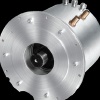Индустриален клъстер "Електромобили" - Учредители:








 |

|

|
| Актуално | За клъстера | Екип | Членове | Документи | Анализи | Услуги | Стани член | Награди | ССЕМ | Контакти |
ИКЕМ - Индустриален клъстер "Електромобили" | Събота, 13.12.2025 | |
|
A Comparative Analysis of Strategies and Strategy-Making in the U.S. and China
The Bass seminars at the Stanford University Graduate School of Business offer faculty and small groups of students the opportunity to interact in highly focused and intense ways on research topics of common interest. Our S373 Bass seminar “Strategic Thinking in Action – in Business and Beyond,” has focused in the last several years on the energy situation facing the United States. The fall 2009 seminar focused on the development and adoption of the electric car and clean coal technologies in the U.S. and China. Together with the seminar participants we wanted to study the current strategies of both countries for dealing with these two issues, and we also wanted to study how they appproach the strategy-making process. This research paper describes the results. Background for the 2009 seminar theme. In the course of our research for previous versions of the seminar we had been particularly struck by former Secretary of State George Schultz’s observation: “Once more we face the vulnerability of our oil supply to political disturbances… How many more times must we be hit on the head by a two-by-four before we do something decisive about this acute problem?” Secretary Schultz’s concern strongly resonated with us because it reinforced our own concern with how seven U.S. Presidents since Dwight Eisenhower in the late 1950s had recognized the looming strategic threats of the nation’s dependency on foreign oil, yet had allowed that dependency to grow unchecked over the next half century. Our previous research also revealed that the transportation sector is an important consumer of foreign oil and the most vulnerable to a major disruption of the foreign oil supply because of its inability to rapidly shift to other energy sources. Consequently, we focused our fall 2008 seminar research on the strategy and implementation of retrofitting one million pick-up trucks, SUVs and vans in the period 2009-2012 as the first “minimum winning game” of a new U.S. energy strategy aimed at increasing energy resilience. Comparative analysis of two focal areas in 2009. We viewed retrofitting as a bridge toward moving the transportation sector from internal combustion engine (ICE)-based vehicles to fully electric vehicles. Hence, we wanted to focus part of the fall 2009 seminar on the development and adoption of the electric car. Given the importance of coal in generating electricity, with attendant global warming and pollution isssues, we decided to focus the other part of the seminar on the development and adoption of clean coal technologies. Since strategies dealing with the development and adoption of electric cars and clean coal technology will depend heavily on the respective governments, this gave us the oppportunity to do a comparative analysis of the strategy-making of the U.S. and the People’s Republic of China (PRC).
In summary, our pedagogical objectives were (i) to carrry out a comparative analysis of strategic industrial techno-economic-political dynamics; (ii) to do so with a focuse on the same problems and in the same time frame in contrasting economic-political systems; and (iii) thereby to provide students with a unique opportunity to learn about national and transnational governance.
Conceptual Frameworks |
Продукти 
Комплектна система за задвижване на електромобилиСистемата за електрозадвижване обхваща гама с три основни типоразмера на ел. мощност със съответните компоненти - електромотор и контролер. oще ...Виж всички продуктиАнкета с продължение...
|
|
|
 ЕВРОПЕЙСКИ СЪЮЗ Европейски фонд за регионално развитие Инвестираме във вашето бъдеще |
 |
 ОПЕРАТИВНА ПРОГРАМА „Развитие на конкурентоспособността на българската икономика” 2007-2013 www.opcompetitiveness.bg |
|
Интернет страницата е създадена с финансовата подкрепа на ЕФРР, в рамките на проект „Развитие на Индустриален Клъстер Електромобили” по ДБФП К-02-2/28.09.2011 г. |
|||